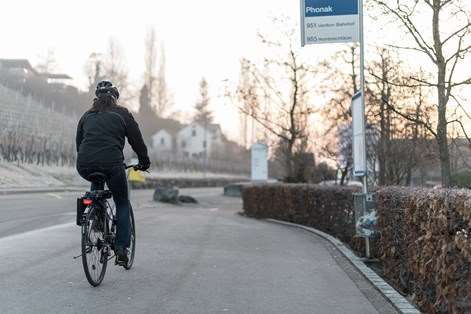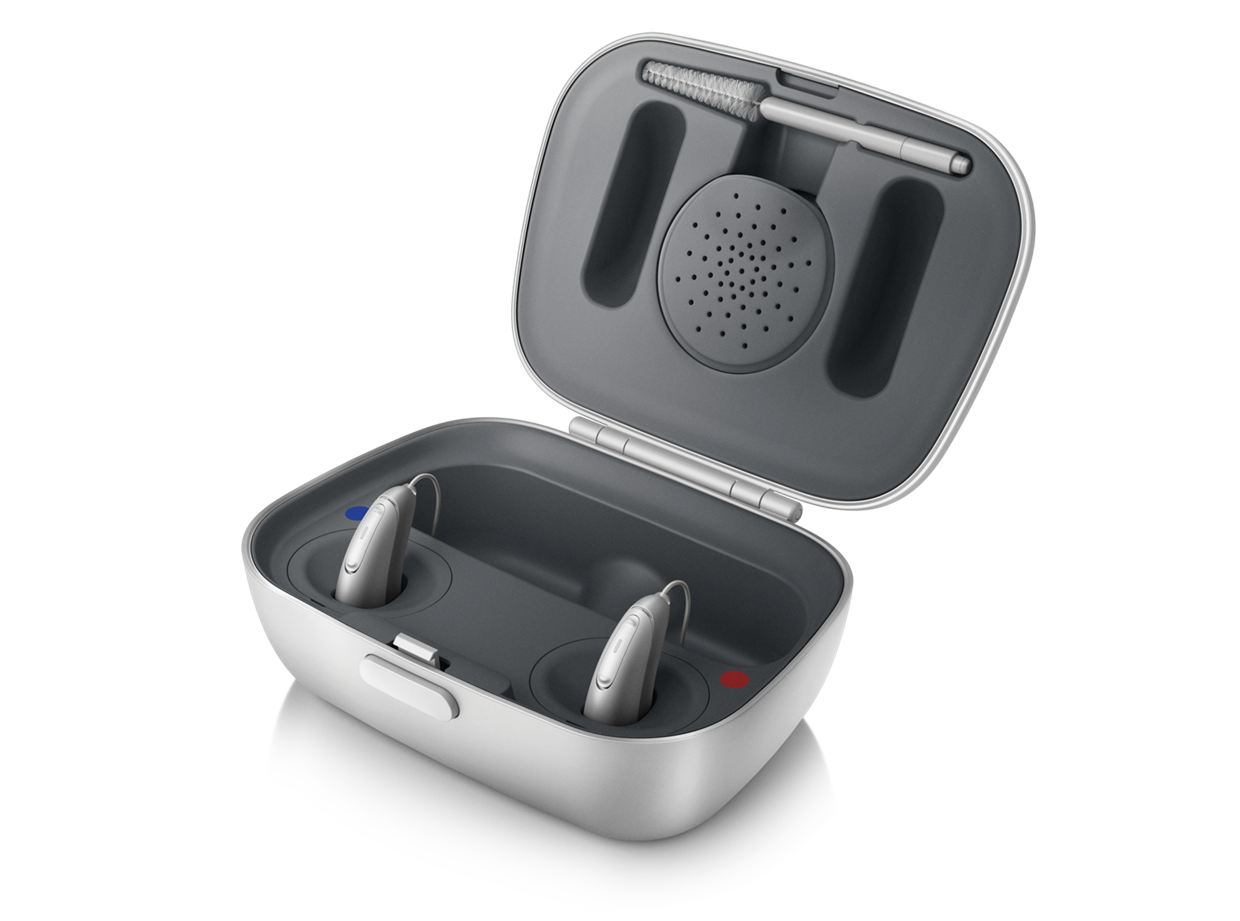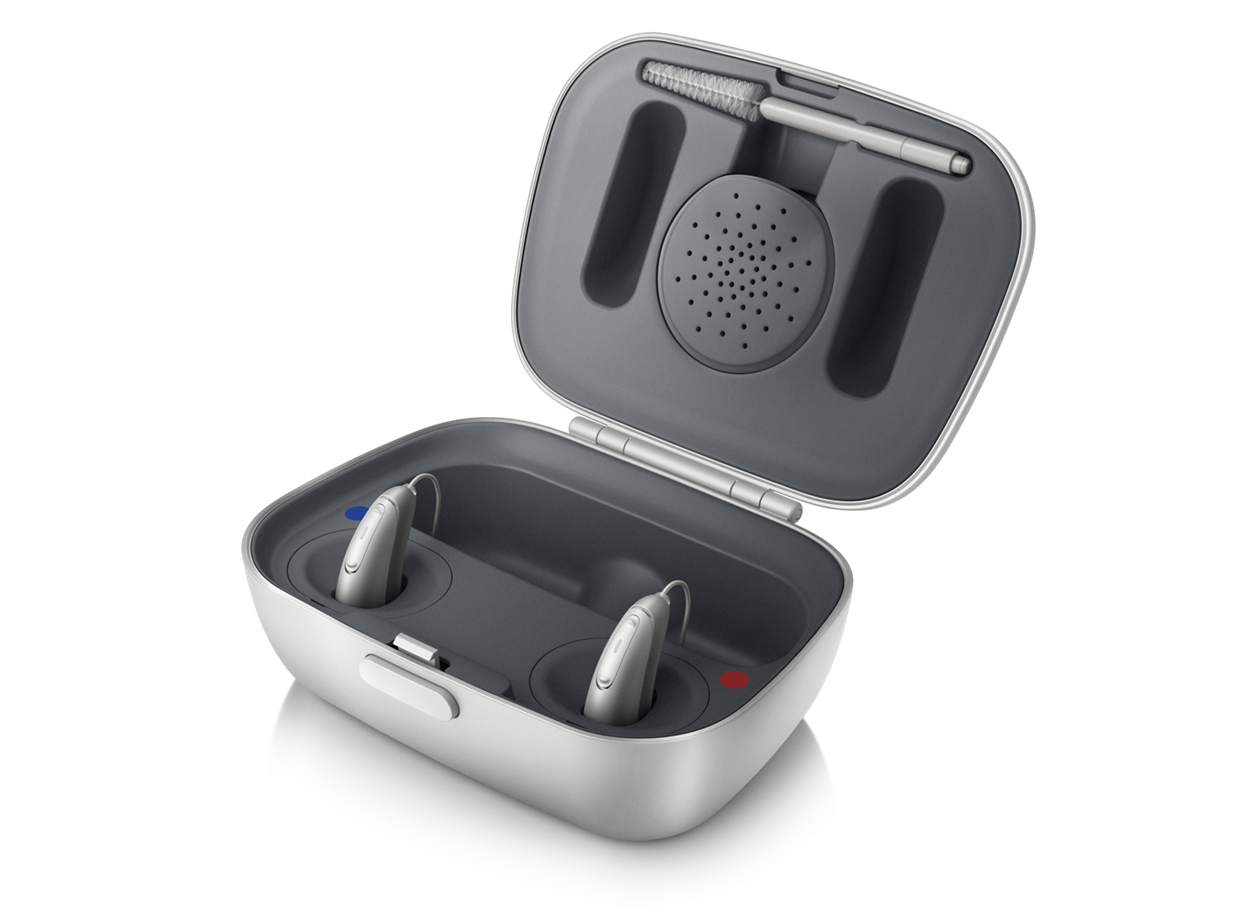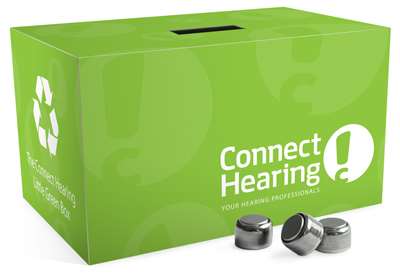Commitments
Safeguarding the environment
Environmentally friendly practices
Commitment and policies
Sonova makes an explicit commitment to continuously promote and pursue environmentally friendly practices throughout the entire lifecycle of its products and across all its business activities. We set the priorities and provide the resources needed to reduce our environmental impact through responsible, efficient management of our buildings and infrastructure, processes, products, and services. Our environmental policy supports Sonova’s commitment to behave proactively and describes the company’s environmental performance management organization and responsibilities, along with their relevant environmental aspects and other management approaches.
Thanks to Sonova’s low risk exposure to environmental issues and its strict group-wide environmental management, no fines or non-monetary sanctions were levied against Sonova in 2018 (and in previous years) for noncompliance with environmental laws or regulations.
Environmental management systems
As part of continuous improvement in operations, Sonova has committed to establish ISO 14001-certified environmental management systems at all its key manufacturing and distribution centers; these require employees to make sound environmental decisions when designing, manufacturing, and servicing products. For non-manufacturing sites, Sonova has implemented an adapted environmental management system to ensure integration of environmental factors in decision-making and improvement in environmental performance. All key Sonova manufacturing and distribution centers are currently certified to the ISO 14001 standard:
- Sonova AG and Advanced Bionics AG (Stäfa, Switzerland)
- Phonak Communications AG (Murten, Switzerland)
- Sonova Operations Center Vietnam Co., Ltd. (Binh Duong, Vietnam)
- Sonova Hearing (Suzhou) Co., Ltd. (Suzhou, China)
- Sonova USA Inc. manufacturing and distribution centers (Warrenville/Aurora, USA)
- Advanced Bionics LLC (Valencia, USA)
Environmental targets
Sonova’s environmental program sets clearly defined targets. We continuously monitor and optimize environmental objectives and performance across the Group. During the past financial year, we developed new environmental five-year targets with 2017 as the base year and 2022 as the target year. The five most important key environmental targets, current progress, and related UN Sustainable Development Goals (SDGs) are outlined in the table below.
Sonova 2022 key environmental targets
|
|
|
|
|
|
|
|
|
|
|
Goal |
|
Key SDGs |
|
2017 base year |
|
2018 performance |
|
2022 target |
|
Energy and climate: Reduce greenhouse gas emissions 1 per revenue by 30% |
|
7, 9, 13 |
|
18.6 t CO 2 eq per million CHF |
|
16.4 t CO 2 eq per million CHF (-11.7%) |
|
13.0 t CO 2 eq per million CHF (-30%) |
|
Green procurement: Increase share of purchase volume from suppliers with certified environmental management system (EMS) to 75% |
|
12, 13 |
|
52% |
|
66% |
|
75% |
|
Materials: Zero 2 substances of very high concern (SVHC) in Sonova products |
|
12 |
|
1 |
|
3 |
|
0 |
|
Waste: Increase recycling rate to 60% |
|
12 |
|
47% |
|
53% |
|
60% |
|
Water: Reduce total water withdrawal per employee by 5% |
|
6 |
|
18.2 m 3 /FTE |
|
18.3 m 3 /FTE (+0.3%) |
|
17.3 m 3 /FTE (-5%) |
1 Scope 1&2 + air-travel related Scope 3 emissions
2 above the threshold level of 0.1% by weight according to REACH regulation
Most of the programs are on track to reach their targets and necessary measures have been initiated. More details on these are provided in the respective sections below.
Energy and climate
Commitment and approach
Climate change is one of the biggest challenges of our time: it requires prompt, effective action from governments, industries, and individuals. Sonova is committed to reducing its carbon footprint attributable to direct and indirect energy consumption, including energy used in transportation and distribution. The company’s strategy requires a steady increase in the energy efficiency of its operations, integrating environmentally friendly energy purchase and generation, and optimizing transportation and distribution logistics. Sonova has set up implementation initiatives that concentrate on its most energy-intensive facilities, while considering other sites that show realistic potential for improvement. From a risk perspective, Sonova’s business has a low exposure to climate change and hence anticipates no financial implications for the organization’s activities from this source.
Climate change risks and opportunities
Sonova takes a systematic approach to managing corporate responsibility risks, both in its supply chain and in its own operations. Identifying and mitigating risks arising from climate change is an integral part of our strategic risk management process, and it is reviewed and assessed together with all other business risks.
Climate change risks are not currently included in the Group Risk Map as they do not appear to be key risks, given of the nature of Sonova’s goods and services. The company has not identified any significant climate change related regulatory, physical, or other risks to its business, including changes in emission limits, energy efficiency standards, carbon taxes, or carbon trading schemes.
At the same time, Sonova does not anticipate any current or future climate change related opportunities. The topic has only an indirect and limited influence on our business, e.g. in terms of production processes. Customer surveys show that the topic is not currently considered relevant to Sonova and therefore does not present a business opportunity.
Energy
In 2018, the total energy consumption of the Sonova Group from heating (fuel oil and natural gas), electricity, and vehicle fuels (diesel, gasoline, liquefied petroleum gas, liquefied natural gas, ethanol) amounted to 120,322 megawatt-hours (MWh). Of this total, 56,351 MWh can be attributed to the wholesale business and 63,971 MWh to the audiological care business. The wholesale business accounts for a higher proportion of electricity consumption because of the air conditioning systems necessary in operation centers in China, Vietnam and the US. On the other hand, the audiological care business accounts for a higher proportion of heating because of a stronger presence in Europe, where cold winters make heating more relevant.
Compared to 2017, total energy consumption fell by 4.4% despite an increase in electricity consumption due to higher production volume and growth in employee numbers. This was mainly thanks to higher fuel efficiency in Sonovaʼs corporate car fleet and decreased heating consumption in the audiological care business.
Energy consumption
|
MWh |
|
|
|
|
|
|
|
|
|
|
|
|
|
|
|
2018 |
|
|
|
2017 |
|
2016 |
|
|
|
Audiological care 1 |
|
Wholesale |
|
Audiological care 1 |
|
Wholesale |
|
Wholesale |
|
Total |
|
63,971 |
|
56,351 |
|
68,888 |
|
56,997 |
|
54,622 |
|
Heating |
|
30,991 |
|
7,879 |
|
36,926 |
|
7,812 |
|
8,033 |
|
Electricity |
|
20,769 |
|
35,405 |
|
18,688 |
|
34,465 |
|
30,629 |
|
Vehicle fuels |
|
12,211 |
|
13,067 |
|
13,275 |
|
14,720 |
|
15,960 |
1 extrapolation, only partial data available
Sonova is committed to increasing the share of renewable energy in its total energy budget. In line with our greenhouse gas reduction target, we have set the target of 100% green electricity for all key manufacturing and distribution centers. Across the company, our target is to increase the share of renewable energy to 20% of total energy consumption by 2022. In 2018, 10,618 MWh of electricity came from renewable sources (2017: 5,520 MWh). Of this, 542 MWh came from the 5,000-square meter solar panel system, activated in 2015, on the roofs of our manufacturing center in Suzhou, China. In total, we increased the share of renewable energy in total energy consumption in 2018 from 4% to 9%. The total non-renewable energy consumption in 2018 was 109,704 MWh.
Greenhouse gas emissions
Sonova aims to achieve by 2022 a 30% reduction of greenhouse gas (GHG) emissions in relation to revenues. The GHG total for our target comprises Scope 1, 2, and air-travel related Scope 3 emissions. In 2018, we reduced GHG emissions intensity by 11.7% from 18.6 to 16.4 metric tons of CO2 equivalents (t CO2eq) per million CHF revenues, keeping us well on track to achieve our long-term goal.
Sonova Group’s absolute carbon footprint of Scope 1 and 2 emissions for 2018 amounted to 35,500 t CO2eq, down by 8.3% from the previous year's emissions of 38,701 t CO2eq. The main reason for the absolute reduction in Scope 1 and 2 GHG emissions is increased use of renewable electricity, as well as group-wide efforts to improve energy efficiency in our infrastructure and production processes. Sonova Group companies developed local carbon footprint reduction measures in line with the global environmental program, to help reach the 2022 environmental targets. Examples include improving building automation to optimize electricity use for heating, ventilation, and air conditioning at our operation centers in Vietnam, replacing IT infrastructure with more energy-efficient devices and improving building insulation at Boots Hearingcare in the United Kingdom, and replacing conventional lighting with LED technology in several Group companies.
Greenhouse gas (GHG) emissions – Scope 1+2
|
t CO 2 eq |
|
|
|
|
|
|
|
|
|
|
|
|
|
|
|
2018 |
|
|
|
2017 |
|
2016 |
|
|
|
Audiological care 1 |
|
Wholesale 2 |
|
Audiological care 1 |
|
Wholesale 2 |
|
Wholesale |
|
Total Scope 1+2 |
|
19,386 |
|
16,114 |
|
20,576 |
|
18,125 |
|
29,108 |
|
Scope 1 |
|
9,584 |
|
5,049 |
|
11,048 |
|
5,446 |
|
6,646 |
|
Scope 2 |
|
9,802 |
|
11,065 |
|
9,528 |
|
12,679 |
|
22,462 |
1 extrapolation, only partial data available
2 values not comparable to 2016, due to changes in emission factors and reporting scope in 2017
In 2018, we estimated Scope 3 emissions for three categories: upstream transportation and distribution (11,543 t CO2eq), business travel (9,830 t CO2eq), and employee commuting (21,558 t CO2eq), which totals to 42,931 t CO2eq of Scope 3 emissions.
Greenhouse gas (GHG) emissions – Scope 3
|
t CO 2 eq |
|
|
|
|
|
|
|
2018 1 |
|
2017 |
|
Total Scope 3 |
|
42,931 |
|
43,542 |
|
Upstream transportation and distribution |
|
11,543 |
|
11,543 |
|
Business travel |
|
9,830 |
|
10,441 |
|
Employee commuting |
|
21,558 |
|
21,558 |
1 Studies to gauge emissions from upstream transportation and distribution, as well as employee commuting, are not carried out every year; our estimates are based on values from the 2017 study and survey.
Total Scope 1, 2, and 3 absolute greenhouse gas emissions for 2018 amounted to 78,431 t CO2eq, a reduction of 4.6% compared to the previous year (82,243 t CO2eq). The majority of Sonovaʼs GHG emissions are Scope 3 emissions (55%).
Business-related air travel
Sonova is a global company: business-related air travel is essential to maintain and improve operations, and to collaborate with internal and external stakeholders. However, we are committed to reduce our carbon emissions from business-related air travel by systematically using information and communications technology to substitute for air travel. In 2018, the carbon emissions from business-related air travel on a group-wide basis were 9,830 t CO2eq, of which 29% originated from the flights of Sonova employees in Switzerland. This represents an absolute emission reduction of 5.9% compared to the previous year (2017: 10,441 t CO2eq), reflecting the benefits of strict travel policies and increased use of web-conferencing tools.
Corporate car fleet
Sonova also estimated the carbon footprint of its corporate car fleet in 2018. All vehicles purchased, leased, or rented by Sonova Group companies were taken into account. The estimated total carbon footprint of Sonova’s corporate car fleet is around 6,645 t CO2eq in 2018, which represents a reduction of 9.3% compared with 2017 emissions of 7,328 t CO2eq. This decrease is mostly due to improved overall fuel efficiency in the Sonova car fleet.
Employee commuting
In 2017, Sonova conducted for the first time a worldwide survey to estimate its carbon footprint from employee commuting; this amounted to 21,558 t CO2eq. The global survey is not carried out every year. Hence, for 2018, we base our carbon footprint calculations on the numbers from the 2017 survey results.
Because the availability of public transport differs across countries, Sonova’s initiatives to promote environmentally friendly commuting are influenced by the local infrastructure. The headquarters in Stäfa established an integral mobility program which provides incentives to use public transport, accompanied by targeted awareness campaigns. This initiative increased the proportion of employees who commute using public transportation, by foot, or by bike from 40% to 60% over the last 10 years.
Upstream transportation and distribution
In terms of product distribution, air freight is clearly the dominant contributor to Sonova’s carbon footprint, accounting for around 98% of relevant CO2 emissions. Based on a study conducted in 2017, the carbon emissions for the hearing instruments segment are estimated at 10,708 t CO2eq in absolute terms and 7.2 kg CO2eq per kg transported in relative terms. The equivalent carbon emissions for the cochlear implant segment were estimated at 835 t CO2eq and 4.0 kg CO2eq per kg transported, respectively. The study is not carried out every year, so total Scope 3 emissions for upstream transportation and distribution for 2018 are estimated at 11,543 t CO2eq, based on the 2017 study results.
Green procurement
We insist on environmentally friendly business practices throughout our supply chain: we do not restrict our environmental standards to our own operations, but consider them equally crucial in selecting our suppliers. The Sonova Group Supplier Principles recommend that suppliers use the international ISO 14001 standard as the starting point and basis for their work.
All new suppliers are screened using environmental criteria. Our long-term target for 2022 is to increase the share of our purchase volume from suppliers with certified environmental management systems (EMS) to 75%. In 2018, we increased the share of our purchase volume coming from suppliers with certified EMS to 66% (2017: 52%). This assessment was made based on desk research as well as internal or external audits and visits.
Materials
As a medical device manufacturer, the Sonova Group takes a proactive approach to evaluating materials in its products and components to assess environmental, health, or safety risks. Sonova may restrict substances because of customer or legal requirements, or because the company believes it is appropriate, based on a precautionary approach. Evaluating alternative materials is a continuous process, relevant to all stages of the production.
The main materials used in Sonova products are polymers (e.g. nylon, silicone, acrylonitrile-butadiene-styrene, acrylic polymers), metals (steel, titanium, tin), and semimetals (e.g. silicon). Sonova complies with the EU directive on Restriction of Hazardous Substances (RoHS 2015/863/EU), which governs the use of heavy metals and halogenated compounds in electrical and electronic equipment, and with the EU’s regulation on the Registration, Evaluation, Authorization and Restriction of Chemicals (REACH EC 1907/2006) for the safe manufacture and use of chemical substances throughout their lifecycle. Sonova’s suppliers are also required to prove their compliance with the RoHS directive and the REACH regulation in their respective processes and supply chains.
In accordance with REACH regulation, Sonova continuously updates the list of substances of very high concern (SVHC) that may be present in its products above the regulatory threshold level of 0.1% by weight of the article. This list is made publicly available on the Phonak website. By the end of the 2018/19 financial year, there were three SVHC substances requiring communication in accordance with the REACH regulation: DEHP, 1,3-propanesultone, and lead titanium trioxide. It is our long-term target to have zero SVHC present in Sonova products above the 0.1% threshold level by 2022.
Other substances classified as hazardous – but excluded from the RoHS directive – include solder paste and wire, paint, organic solvents, oil emulsions, mineral oil, and water-based cleaning solution. Employees who work with chemicals and hazardous substances, or come into contact with them, are regularly trained in their safe handling.
Waste
For Sonova, dealing with materials sustainably means avoiding or reducing waste wherever possible, collecting recyclables separately and disposing of hazardous waste in environmentally compatible ways. Our long-term target for 2022 is to increase the recycling rate to 60%. Thanks to various initiatives in Group companies, such as improved waste separation and recycling systems, we were able to further increase our recycling rate from 47% in 2017 to 53% in 2018.
The volume of total waste increased by 7.7% in 2018, mostly due to an increase in production volume and number of employees. Solid waste sent to disposal, such as municipal solid waste or material left over from manufacturing processes, decreased by 3.3% to 995 metric tons (previous year: 1,030 metric tons). The share of recycling waste increased by 21.7% from 958 metric tons in 2017 to 1,165 metric tons in 2018. This reflects group-wide efforts to foster recycling.
Sonova complies with legal requirements to transport and dispose of hazardous waste solely through officially authorized disposal agents. The main categories of hazardous waste substances are solvents, oil emulsions, paints, adhesives, soldering paste, filters, petroleum, and washing fluids. The amount of hazardous waste decreased in 2018 by 28.1% from 56 to 40 metric tons.
Waste
|
metric tons |
|
|
|
|
|
|
|
|
|
2018 |
|
2017 |
|
2016 |
|
Total |
|
2,201 |
|
2,043 |
|
2,196 |
|
Non-hazardous |
|
995 |
|
1,030 |
|
1,142 |
|
Hazardous |
|
40 |
|
56 |
|
36 |
|
Recycling |
|
1,165 |
|
958 |
|
1,018 |
Water
Sonova uses water provided by utilities primarily for sanitary services and kitchen and garden areas. Our manufacturing processes do not require significant amounts of water. In our environmental program we therefore mainly focus on conserving water in our office buildings, e.g. with low-volume water equipment in restrooms.
Sonova takes a systematic approach to managing ESG risks, both in its supply chain and in its own operations. Risks related to water are reviewed and assessed together with all other business risks. Water availability and quality risks are not currently included in the Group Risk Map, as we do not consider them key risks.
In 2018, water consumption at Group level increased by 6.1% from 132,505 cubic meters (m3) to 140,627 m3 in 2017. The sources of all water withdrawn are municipal water supplies or other public or private water utilities. The main reason for the increase in water consumption is the higher number of employees. Our 2022 target is to reduce the total water consumption per employee to 17.3 m3, which corresponds to a reduction of 5% compared to 2017. However, in 2018, relative water consumption slightly increased by 0.3% from 18.2 m3 to 18.3 m3 per employee. We will intensify measures to reverse this trend and bring us back on track to achieve our long-term target.
Sonova returns water to the sewage system without contamination. The company has experienced no spills from operating processes or other instances of water contamination.
Water use
|
m 3 |
|
|
|
|
|
|
|
|
|
2018 |
|
2017 |
|
2016 |
|
Total municipal water supply |
|
140,627 |
|
132,505 |
|
133,972 |
|
Municipal water supply per FTE |
|
18.3 |
|
18.2 |
|
20.1 |
Air emissions
Sonova has low atmospheric pollutant emissions from volatile organic compounds (VOCs) in paints and adhesives, in coatings, and for surface cleaning. Group-wide levels of VOCs evaporated to air decreased in 2018 by 11.1% from 4,655 liters to 4,137 liters due to improvements of production processes leading to a significant reduction of isopropanol used.
Sonova has experienced no spill-related atmospheric pollution. We have not used ozone-depleting chlorofluorocarbons (CFCs) in our production processes since 1992.
Volatile organic compounds (VOCs)
|
liters |
|
|
|
|
|
|
|
|
|
2018 |
|
2017 |
|
2016 |
|
VOC |
|
4,137 |
|
4,655 |
|
4,191 |
Life cycle perspective and circular economy
Sonova is committed to minimize the impact of its products and packaging on the environment and human health throughout the entire life cycle and to foster the transition toward a more circular economy. Our global environmental program covers the different stages of the product life cycle from product design, to procurement and manufacturing, packaging and distribution, consumer use, and end-of-life.
Product design
Sonova performs Life Cycle Assessments (LCA) as part of the product research and development phase. The aim is to reduce the use of hazardous substances, avoid other environmental risks, minimize consumption of resources, and design for recycling and easy end-of-life treatment.
Improving energy efficiency is an important aspect in the research and development phase of our products. For example, Phonak Audéo™ Marvel was launched in 2018/19: and it is powered by our new leading-edge technology, based on Sonova’s proprietary SWORD™ (Sonova Wireless One Radio Digital) Made For All wireless chip. SWORD is a low-voltage radio chip with the lowest power consumption of any hearing aid using Bluetooth®1 Classic, and is the world’s first Bluetooth® Classic chip compatible with small hearing aid batteries.
- The Bluetooth® word mark and logos are registered trademarks owned by the Bluetooth SIG, Inc.
Procurement and manufacturing
Sonova has been advancing the industrial use of 3D printing technology for many years: at the beginning of the millennium, Sonova was one of the first companies to start digitally producing custom shells for in-the-ear hearing aids and earpieces. Today, the company prints hundreds of thousands of custom-made products every year, such as the Virto™ B-Titanium, combining the strength and lightness of titanium with the versatility of 3D printing to produce the smallest custom instrument in the company’s history – and saving material with a shell that is twice as thin as traditional custom shells.
Packaging and distribution
We continuously strive to further reduce the waste we generate, and the carbon footprint of our packaging and transportation. Our current focus is the SLIM Packaging Project which aims to reduce considerably the packaging size and weight of selected hearing aids, along with the number of hard cases.
Consumer use
Since 2016, the Sonova brands Phonak, Unitron, and Hansaton have continuously expanded their portfolios of hearing aids with a built-in lithium-ion rechargeable battery. In 2018, Unitron introduced Moxi Jump R – Unitron’s first lithium-ion rechargeable Receiver-In-Canal hearing aid, which offers a full day of hearing on a single charge. Advanced Bionics also offers rechargeable battery options for cochlear implant sound processors. Our increasing focus on rechargeable hearing solutions helps us to reduce the use of disposable batteries.
We also provide a broad range of repair and refurbishment services to lengthen the life cycle of our products and their components.
Product end-of-life
Sonova complies with the EU directive on Waste Electrical and Electronic Equipment (WEEE), which requires such equipment to be returned to the manufacturer for recycling or environmentally friendly disposal.
Sonova Group companies with retail activities offer battery collection programs, in which customers can bring the used hearing aid batteries back to the store or take home a box, collect their batteries and bring them back to the store for recycling. The batteries collected are forwarded and disposed of through officially authorized disposal agents. In 2018, a total of more than two metric tons of batteries were collected at different stores worldwide. One example is the battery collection initiative of Connect Hearing Canada, where customers can collect their used hearing aid batteries in “The Little Green Box” and return them to the clinic for recycling once the box is full.
Environmental reporting and system boundaries
Sonova’s environmental data monitoring and reporting includes energy consumption, carbon footprint, materials, waste disposal, water consumption, and emissions of volatile organic compounds (VOC). The company reports and discusses environmental performance to the limits of the available data. Actual data was collected whenever feasible, and estimated if data collection was not feasible given the decentralized organizational structure of these businesses and their small, often rented facilities.
The tables above show environmental data from Sonova Group companies that operate as headquarters, manufacturing sites, wholesale distributors, and Group companies with retail activities only. Energy consumption, car fleet and air flight data are provided for all entities in the 2018 environmental data reporting. Waste, water and VOC emissions data were collected for all Group companies that operate as headquarters, key manufacturing and distribution centers, as well as larger wholesale distributors. For Group companies with only retail activities, waste, water and VOC emissions data are only monitored where feasible and not included in this report. Overall, the entities covered in the waste, water and VOC emissions data reporting account for 93.5% of Sonova’s employees (excluding employees of Group companies with only retail activities). Data for the AudioNova Group companies, acquired in September 2016, were included for the first time in the 2017 environmental reporting.
Sonova’s environmental management system monitors greenhouse gas emissions arising from its electricity, heating oil, and natural gas consumption. The company measures its carbon footprint using country-specific grid emission factors and, if available, specific emission factors provided by energy utilities. Scope 2 emissions were calculated using the ‘market-based’ approach in accordance with the Greenhouse Gas Protocol Scope 2 Guidance. When reported according to the ‘location-basedʼ approach, the Scope 2 emissions were 24,362 t CO2eq. Sonova purchased 3,546 MWh as renewable energy certificates (RECs), which were accounted for under the market-based approach for Scope 2. The measurement methodology and reporting format for the carbon footprint are based on the standards and guidance of the Greenhouse Gas Protocol.
Sonova differentiates between direct emissions (Scope 1) from sources such as burning natural gas, indirect emissions (Scope 2) from sources such as using electricity, and, starting in 2017, indirect emissions (Scope 3) from upstream transportation and distribution, business travel, and employee commuting. Since 2014, we have also investigated the environmental impact of our corporate car fleet – a further Scope 1 emission source. For the car fleet and air flight data, all Sonova Group companies were taken into account.
Sonova strives to be trustworthy and transparent with all its stakeholders; it therefore participates in the Carbon Disclosure Project (CDP). The results are publicly available and accessible on the CDP website. The CDP scoring level (Disclosure, Awareness, Management, Leadership) demonstrates a company's level of environmental stewardship, and actions and approaches in managing climate change. In 2018, Sonova has received a high score of A-, which is within the Leadership band.







